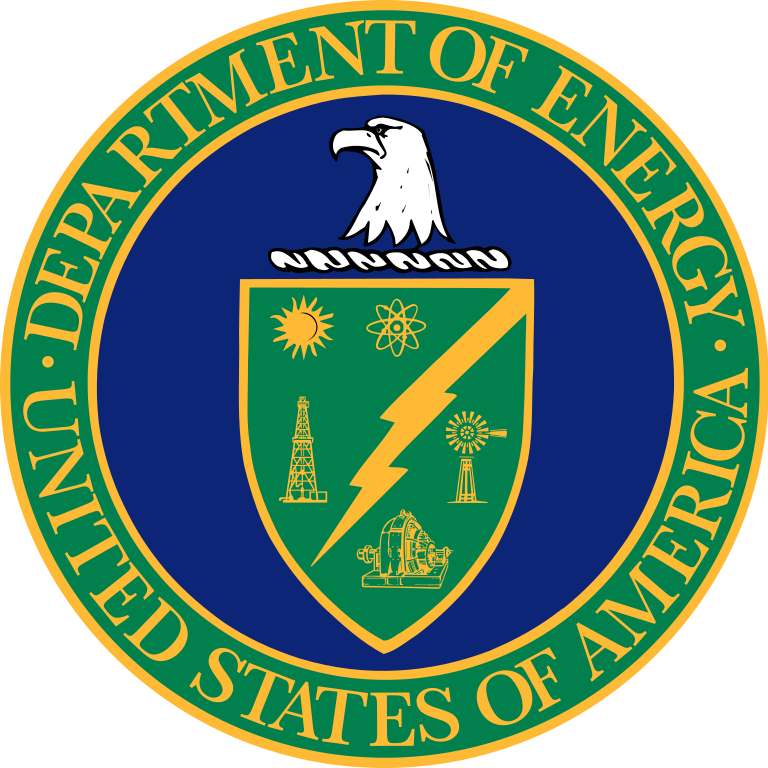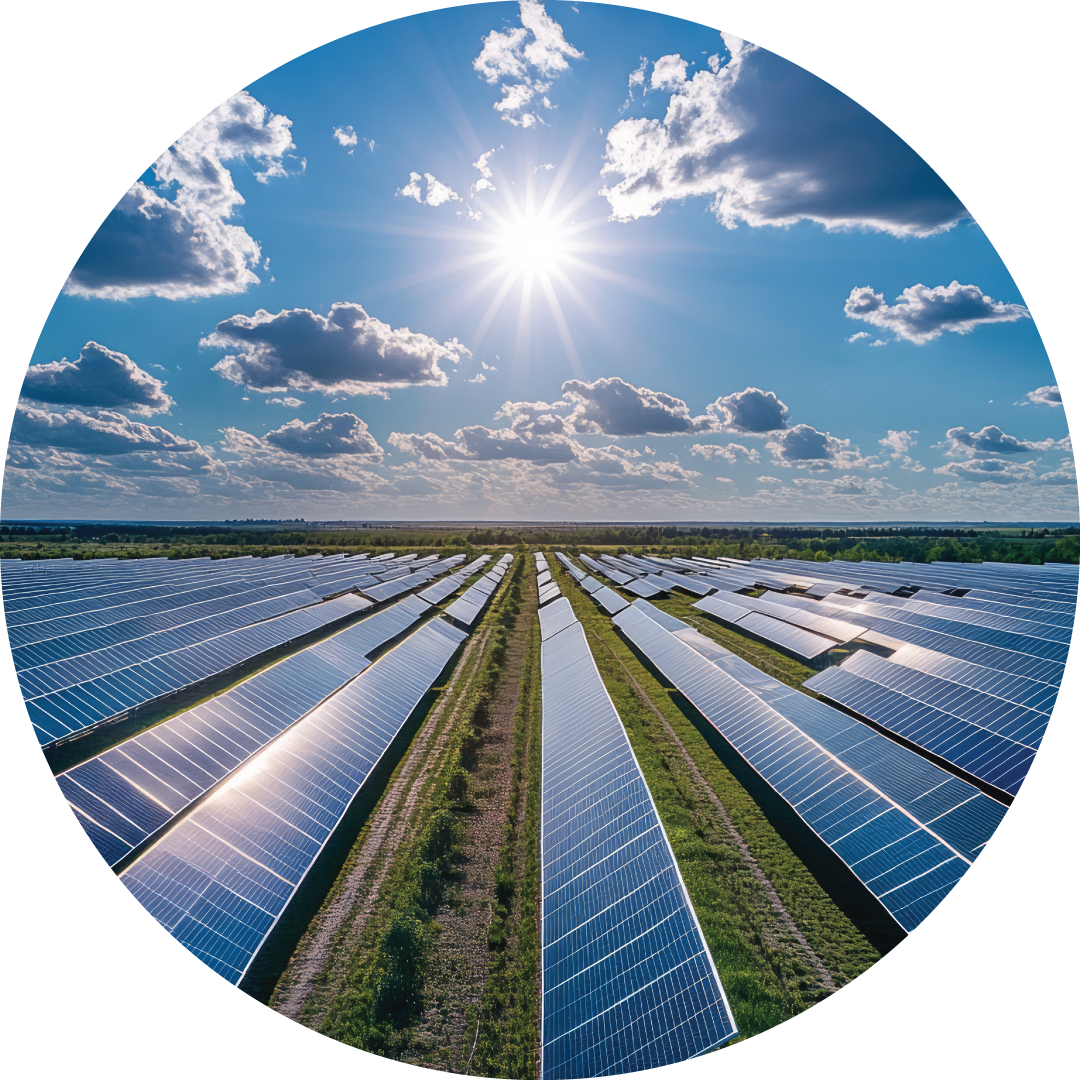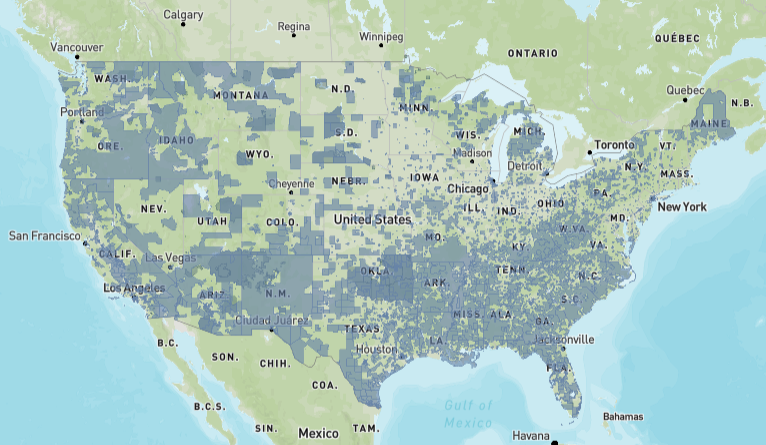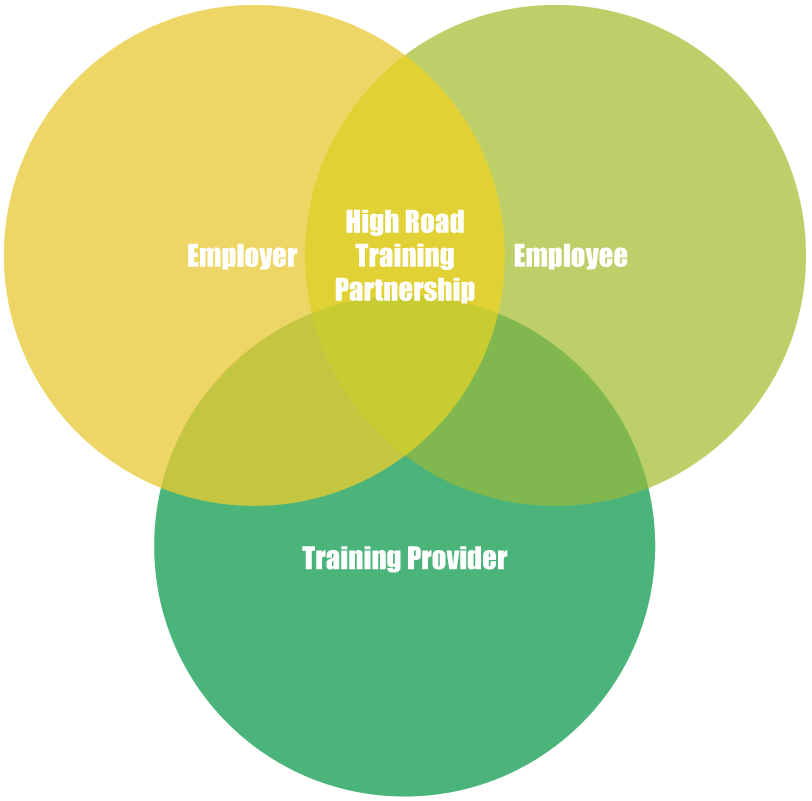INTRODUCTION TO
O&M FOR LARGE-SCALE PV SYSTEMS
Ready to launch your career or bolster your PV team’s abilities in solar O&M? SEI’s PVOL095: Introduction to O&M for Large-Scale PV Systems delivers essential training for both aspiring technicians and growing businesses. As the utility-scale solar sector expands, our comprehensive online course prepares entry-level O&M technicians to be job-ready from day one, while helping companies scale operations quickly and safely without costly in-house training. Start building the future of solar O&M today.
Ready to begin? Take the next step. I am an:
Improve Safety
Enhance workplace safety and minimize accident risks through proper training for solar site operations.
Save Time & Cost
Start training today with our online, on-demand course – an efficient solution whether you’re an individual starting your career or an employer seeking team training.
Increase Efficiency
Course completion leads to improved skills and knowledge, resulting in effective and efficient job performance.
Course Overview
This course is an introduction to and overview of utility-scale PV and energy storage systems, and is targeted toward entry-level technicians. There are no prerequisites.
Safety is a primary focus, including assessing physical and electrical hazards, creating an electrically safe work environment, using disconnecting means and lock-out/tag-out (LOTO) to segment systems, personal protective equipment (PPE), and selecting and safely using electrical meters.
Configurations, functionality, and operation of typical large-scale PV and storage systems, including the equipment that comprises systems such as inverters and other power electronics, PV modules, wiring systems, disconnects and overcurrent protection, and AC and DC aggregation are covered. Students will also learn how environmental conditions impact PV module performance, and how those modules are configured into PV arrays, along with grounding and labeling typical of large-scale sites.
What’s Included in the Course
Introduction
Module-level outcome:
• Recognize the fundamental categories, requirements, and roles necessary for operations and maintenance (O&M) on large-scale PV systems.
Lesson 1: Operations and Maintenance (O&M) Overview
LO1: Recognize categories of operations and maintenance (O&M) activities
LO2: Recognize the protocols, procedures, documents, codes, and standards essential to O&M
LO3: Identify roles and corresponding scopes of work in O&M
Safety and Basics of Electricity
Module-level outcome:
• Recognize the fundamental principles of electricity and identify site and electrical hazards and risks in the context of large-scale PV systems in order to work safely on the jobsite.
Lesson 1: PV Site Hazards Assessment
LO1:Identify mechanical, physical, chemical, fire, local, and environmental hazards that are present on PV sites.
LO2:Identify risk factors and prevention strategies for non-electrical hazards
Lesson 2: Introduction to Electricity
LO1: Identify the differences between Alternating Current (AC) and Direct Current (DC)
LO2: Describe the relationships between voltage, current, resistance, watts, watt-hours, and kilowatt-hours
LO3: Calculate basic power ratings and energy consumption
Lesson 3: Electrical Hazards & Risks
LO1: Identify the two major types of electrical hazards: shock and arc flash
LO2: List health and safety outcomes resulting from exposure to electric shock and arc flash
LO3: Define approach boundaries for qualified and unqualified personnel working on energized equipment, based on the NFPA 70E standard
LO4:Interpret electrical hazard labels for shock and arc flash boundaries
Lesson 4: Electrical Personal Protective Equipment (PPE)
LO1: List electrical PPE to be used when shock hazards are present
LO2: Apply best practices when using and storing insulated rubber gloves
LO3: Recognize industry best practices and NFPA 70E requirements for PPE when working with shock hazards present
LO4: Recognize arc flash PPE types and category levels
LO5: Interpret arc flash / shock hazard warning labels to determine arc flash and shock PPE requirements
PV & Storage Systems & Components
Module-level outcome:
• Recognize common components, component parts, and configurations of PV systems, including their schematic symbols, roles and functions, operating states, and equipment specifications.
Lesson 1: Intro to PV Systems
LO1: Recognize schematic symbols used in electrical diagrams
LO2: Recognize DC and AC sections of PV systems
LO3: Identify operating states of PV and PV+BESS
LO4: Describe the functions and interactions of typical PV power plant system components
Lesson 2: PV Modules
LO1: Identify key parts of a PV module
LO2: Define standard test conditions and why they are important
LO3: Identify the differences between thin-film and crystalline silicon PV modules
LO4: Recognize how an I-V curve graphically represents the electrical characteristics of a PV module
LO5: Define Voc, Isc, Vmp, Imp, Pmp and recognize under what circumstances each would occur
Lesson 3: Intro to Grid-direct Inverters
LO1: Define the primary functions of inverters in large-scale PV sites
LO2: Identify relevant criteria from inverter specification sheets
LO3: Compare system configurations for central and string inverters
LO4: Identify common inverter components
Lesson 4: PV+BESS Systems and DC-to-DC Converters
LO1: Identify DC- and AC-coupled PV+BESS configurations
LO2: Recognize the role of dc-to-dc converters in PV+BESS systems
Lesson 5: Large-scale Racking and Mounting Systems
LO1: Identify common racking systems and support structures for large-scale PV
LO2: Identify components of racking systems
LO3: Distinguish between centralized and decentralized tracker drive configurations
LO4: Recognize typical tracker behaviors
The Solar Resource, Connectors, Conductors, & Torque
Module-level outcomes:
• Explain the sun’s path and movement, and the various factors that affect solar production.
• Recognize the characteristics and purpose of conductors, conductor materials, and termination types, and physical protection for conductors.
• Identify torque tool characteristics, torque unit measurements, and proper tool application.
• Recognize proper mating connector parts and types, and the importance of proper assembly, installation, and disconnection.
Lesson 1: The Solar Resource
LO1: Describe the sun’s path and movement over one day & one year
LO2: Recognize how the sun’s position relative to the PV array affects production
LO3: Recognize the effects of soiling and shading on PV array production
Lesson 2: Conductor and Connector Considerations
LO1: Recognize characteristics of conductor materials, gauge, and insulation ratings
LO2: Recognize materials and methods used to provide physical protection to conductors.
LO3: Identify different termination types including crimped lugs and terminals and connectors
Lesson 3: Torque Tools
LO1: Recognize the importance of proper torquing
LO2: Identify characteristics of commonly used torque tools
LO3: Recognize commonly used units for torque measurement and their relationships
LO4: List the steps for properly using a torque wrench and torque screwdriver
Lesson 4: Mating Connectors
LO1: Identify the common parts of mating connectors
LO2: Identify common types of mating connectors
LO3: Explain the importance of proper mating connector assembly, installation, and disconnection
Electrical Meters & Series & Parallel
Module-level outcomes:
• Identify charactersitics of digital multimeters and other handheld meters, including meter features and functions, ratings, and meter-related safety considerations.
• Recognize practical applications, steps, and best practices for performing meter tests in PV systems.
• Describe the principles of series and parallel wiring in PV systems, including the relationships between voltage, current, and power.
Lesson 1: Digital Meter Fundamentals
LO1: Identify key handheld meters used with PV systems
LO2:List common functions of digital multimeters (DMM) and clamp-on ammeters
Lesson 2: Meter Selection
LO1: Identify basic meter characteristics required for meter selection
LO2: List additional meter features and accessories
LO3: Identify how meters and leads are rated
LO4: Identify appropriate meter ratings based on the electrical characteristics of the work to be performed
Lesson 3: Meter Use and Safety
LO1: Identify best practices for meter use and safety
LO2: Describe three-point test (live-dead-live) practices
Lesson 4: Applied Series and Parallel
LO1: Explain the relationships between series wiring, parallel wiring, voltage, current, and power
LO2: Recognize PV modules and strings as building blocks of voltage and current in PV arrays
LO3: Estimate power, current, and voltage in different series and parallel PV configurations
Lesson 5: Meter Testing PV Systems
LO1: Recognize practical applications for meter and instrument testing in PV systems
LO2: List the steps and best practices for performing key tests
LO3: Select appropriate tests to be performed for specific tasks
Temperature, Irradiance, Performance, & Data
Module-level outcome:
• Recognize the factors that impact performance of PV systems, including temperature and irradiance.
• Recognize the means of measuring and assessing PV system performance and environmental data, including data acquisition and SCADA systems, and the importance of cybersecurity infrastructure protections.
Lesson 1: Temperature and Irradiance
LO1: Describe the relationship between temperature and voltage in PV systems
LO2: Describe the relationship between irradiance and current in PV systems
Lesson 2: Intro to PV Performance
LO1: Recognize the factors that impact the performance of PV systems
LO2: Identify methods used to determine if a system is producing properly
LO3: Describe the functions of a data acquisition system (DAS)
Lesson 3: Monitoring, Controls, and Communication
LO1: Recognize the importance of PV system data, DAS, and SCADA systems
LO2: Identify common components of DAS and SCADA systems
LO3: Identify required cybersecurity programs and controls for NERC CIP compliant PV plants
Voltage, Current, Disconnects, & Overcurrent Protection
Module-level outcomes:
• Identify principles of voltage and current escalation.
• Recognize hardware types, equipment characteristics, and equipment locations within PV + BESS systems where changes occur in current and voltage levels.
• Recognize the purpose of, and differences between, load-break and non-load-break rated devices, disconnects, isolating devices, and overcurrent protection devices.
Lesson 1: Voltage Escalation in Large-scale PV Sites
LO1: Identify DC and AC voltage escalation characteristics and hardware in large-scale PV sites
LO2: Evaluate DC and AC voltage levels and sections in PV site schematics
Lesson 2: Disconnecting Means & Isolating Devices
LO1: Differentiate between load-break rated and non-load-break rated devices
LO2: Explain the purpose of disconnecting means and isolating devices
LO3: Identify typical disconnects and isolating devices in large-scale PV systems
Lesson 3: Overcurrent Protection
LO1: Explain the purpose of overcurrent protection (OCP) in electrical circuits
LO2: Identify the typical overcurrent protection devices and their locations in PV systems
LO3: Recognize hazards related to overcurrent
Lesson 4: Current Escalation in Large-scale Sites
LO1: Recognize hardware and equipment for parallel connections in PV systems
LO2: Recognize equipment that may have integrated overcurrent protection and/or disconnecting means
LO3: Identify and distinguish between disconnects, combiners, and recombiners
Large-scale Systems & Plan Sets
• Identify important components of plan sets, single line diagrams, and wiring details, including typical elements, sheet types, diagram details, and schedules.
Lesson 1: Reading Plan Sets
LO1: Describe how to use and navigate plansets
LO2: Identify typical elements of plan sets
LO3: Recognize typical plan set sheets
Lesson 2: Reading Single Line Diagrams (SLDs) and Wiring Details
LO1: Categorize types of wiring diagrams
LO2: Identify strategies for reading wiring diagrams
LO3: Identify common diagram details
LO4: Use schedules associated with diagrams
Lesson 3: Large-scale System Configurations
LO1: Identify common configurations of large-scale PV system equipment
LO2: Identify common configurations of large-scale PV + BESS system equipment
Power Source Isolation - Electrical Safety & LOTO
Module-level outcomes:
• Recognize best practices for creating an electrically safe work environment on large-scale PV sites, including proper LOTO procedures.
• Describe how to utilize disconnecting means and isolating devices to safely segment equipment in PV systems.
Lesson 1: Creating an Electrically Safe Work Environment
LO1: Explain the general methods of creating electrically safe work environments
LO2: List additional considerations and risk factors that may be present when abnormal conditions exist
Lesson 2: Lockout/Tagout (LOTO)
LO1: Describe the objectives and importance of LOTO procedures
LO2: Identify typical hardware used for LOTO procedures
LO3: List responsibilities, rights, and protections regarding LOTO
LO4: List the general lockout / tagout steps found in the NFPA 70E standard
Lesson 3: Segmenting PV Systems
LO1: Define isolation and de-energization
LO2: Describe the general approach to proper planning and safe execution of segmenting equipment
LO3: Recognize the presence of hazardous voltages when disconnects are open (off)
LO4: Recognize the use of disconnecting means and isolating devices to isolate portions of a PV array into segments
Grounding, Wire Management, & Labeling
Module-level outcomes:
• Identify grounding and bonding system functions and equipment, and recognize potential hazards.
• Recognize wire management and labeling best practices on large-scale PV sites.
Lesson 1: Grounding Considerations
LO1: Identify the basic functions and importance of a proper grounding and bonding system
LO2: Identify common grounding and bonding equipment
LO3: Recognize potential hazards associated with grounding and bonding systems
Lesson 2: Wire Management in Large-scale PV Sites
LO1: Recognize best practices for wire management
LO2: Identify general wire management procedures and materials
LO3: Identify tracker-specific wire management concerns
Lesson 3: Labeling on Large-scale PV Sites
LO1: Recognize equipment and circuit identification methods
LO2: Recognize field labeling practices for location and identification of equipment and conductors
Frequently Asked Questions
The purpose of this course is to onboard new (or fairly new) operations and maintenance (O&M) technicians in the ground-mounted utility-scale sector. Companies will likely specialize in O&M services or will be EPCs that also provide O&M services. There are no prerequisites. This course is an introduction for those who wish to become entry level O&M Technicians and start a career pathway in this sector of the solar industry.
This course is a starting point specific to O&M work, there are still some common learning objectives that have been covered in other SEI courses. So if your team has taken these other courses from SEI, some of the learning content will be revisited, but in the specific context of utility scale solar.
Topics covered in this course are also covered in the following SEI courses:
The course is 30 total contact training hours including presentations, knowledge checks, readings, exercises, and quizzes.
SEI’s PVOL350 and PV351L are intended to be upper-level courses, where students are already expected to have working knowledge of PV systems, typically through a combination of course work and field experience. They are two of SEI’s most advanced classes, and dive more deeply into advanced tools and techniques not covered in the entry-level class, production analysis, and troubleshooting. This PVOL095 course is intended to be a pathway to these more advanced courses and will be introduced to these concepts in a more entry-level and orientation format.
There is some similar content between the courses in that they both cover fundamentals of PV and storage systems. However, this course focuses strictly on utility-scale, ground-mounted systems, and is designed as a starting point for technicians who will be maintaining these systems with a specific focus on O&M. PV101 covers residential and commercial applications, not utility-scale, and in addition to the fundamentals is more focused on system design, and covers a bit of installation.
Perhaps eventually. Most likely they will take other training more focused on utility-scale O&M. Some students may be interested in more general PV information of the type in PVOL101 and PVOL202; more likely they will eventually need the material in PVOL350 and PV35L, but there is likely additional training between this course and in PVOL350 and PV35L, that will come from a variety of sources, including on-the-job.
SEI is in the process of developing follow-on training that is in line with entry-level O&M technician standards (as being outlined by ACP, Amicus O&M Cooperative, and SEIA in various standards) in order to offer a more complete set of coursework that addresses the overall amount of training necessary to become a qualified technician. As the industry establishes these standards, SEI will continue to provide industry and standards aligned offerings. For a custom training pathway for your team, contact SEI business development by filling out the form above.
Our SEI Business Development team can best answer this based on the experience and training of your team and the particular student. The one caveat would be that this course is a quick way to get an overview of utility-scale systems if the student has only been working in the residential or commercial sectors.
This course is an introduction to components, configurations, safety, and meter testing, and is the first step in training that will include other courses (from SEI and from component manufacturers), as well as on-the-job training. This course is the first step on the pathway to becoming an O&M Technician.
Ultimately the determination if someone is ready to be on fully operational solar PV production site is up to the individual employer. Internal determination will need to be made if the employee has acquired the qualifications and training necessary to work on sites; realistically they will be able to perform some duties, typically under the supervision of a higher-level technician, and will require more training for other tasks that are part of typical O&M scopes of work.
Scholarships Available!
You may be able to get your training fully funded through one of our scholarship funds! Apply for a scholarship today and include PVOL095 in your course preferences. If approved, you can begin your training immediately.
Live in the United States or a US Territory? You (or your employees) could get your training fully funded! Simply complete our quick and easy application and get a response within 24 hours. Approved students can start learning right away.
Scholarships are supported by the U.S. Department of Energy (DOE) and Solar Energy Technologies Office (SETO) and are available to individuals from disadvantaged communities and underserved populations, with no prior experience required.
This course is an introduction to and overview of utility-scale PV and energy storage systems, and is targeted toward entry-level technicians. There are no prerequisites. To see if you and/or your team members qualify for a scholarship, click the map below and enter your location. If you/your employee(s) lives is within a blue area, you are eligible to apply for a scholarship for this training. Please fill out the form above to get more information and proceed.
Advancing Equity through Workforce Partnerships
The Bipartisan Infrastructure Law, a landmark piece of legislation, aims to modernize the nation’s infrastructure while promoting sustainable energy solutions. One of the key components of this law is the emphasis on equity and workforce development, particularly in the clean energy sector. SEI, in collaboration with Amicus O&M Cooperative, has embraced this vision through the creation of the Solar Operations and Maintenance (O&M) High Road Training Partnership. This collaborative project is being funded in part by a grant from the U.S. Department of Energy Solar Energy Technologies Office.
The U.S. Department of Energy Solar Energy Technologies Office accelerates the advancement and deployment of solar technology in support of an equitable transition to a decarbonized economy. Learn more at energy.gov/eere/solar.


Get More Info & Start Training
Ready to begin? Enter your details to receive enrollment information. I am an:
Employer
Individual
What is a High Road Training Partnership?
For decades, SEI has supported the solar industry through workforce development funded by grants, government entities, and donors. We have trained thousands of people, creating organic connections with employers. Many SEI alumni, now training managers, continue to connect their teams with the training that launched their solar careers.
To enhance employment and career advancement, SEI has adopted the High Road Training Partnership model. This approach connects employers with our training programs to benefit their current and future teams.
What sets this model apart is SEI’s partnership with employers at the beginning of the training process, rather than at the end. This ensures new hires and candidates receive industry-aligned training with commitment from employers, employees, and the training provider from the start. Continuous communication and feedback loops ensure ongoing improvement.
Our goal is to extend this model beyond the O&M Technician training, strengthening the connection between employers, their teams, and future solar professionals across all our training programs.
This course made possible through support from AES
SEI would like to extend our gratitude to AES for their generous support of our non-profit mission. Their commitment to advancing renewable energy education has been instrumental in the development of this online course, PVOL095: Introduction to O&M for Large-Scale PV Systems. With their support, we are able to equip a new generation of professionals with the essential skills and knowledge needed to excel in the growing field of operations and maintenance in solar energy career pathways. Thank you AES for being a vital partner in our mission to promote sustainable energy solutions and empower individuals to make a positive impact in the industry.





